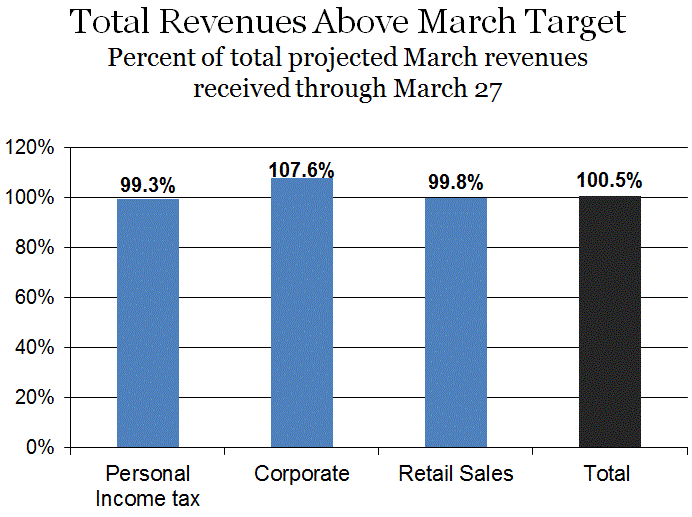March
madness is ending with revenues flowing into state coffers at a good pace. Based on preliminary estimates through March
28, tax receipts from California’s three major revenue sources have totaled $5.8
billion, exceeding estimates for the total month by over $100 million. This will represent the close for the month
because of the upcoming weekend and the Cesar Chavez State Holiday on
Monday. The March number could be
revised significantly when released on Tuesday after any corrections are made
and auditing is completed. Looking at
the fiscal year-to-date, numbers through March show that total revenues are
ahead of Budget projections by about $1.3 billion or 2.2%. This is a nice margin to have if it lasts.
Budget
projections are difficult to make. Keep
in mind that current projections contained in the Governor’s new budget
presented early this year were based on actual data that was already available
for about half the fiscal year. When
the focus shifts to Fiscal Year 2014-15, with the release of the May Revision
of the Budget, revenue numbers will solely reflect projections.
How precise
are General Fund revenue estimates?
Given the range of variables that affect revenues—including the economy,
the weather, and changes in federal law or taxpayer behavior—the estimating error can easily rise. One
study found that if the estimators could control for variations in the economy,
the estimating error would hover around 5.0 percent. The consequences for this built-in error
rate can have a big effect on budget planning, deficits, and the health of the
General Fund.
By way of
comparison, the 2013 American League batting champion, Miguel Cabrera, got on
base 1.7 percent more often than did the National League’s champion, Michael
Cuddyer. If budget projections could be
limited to just that much difference between estimates and actuals, even then
the revenue swing would be nearly $2 billion.
A $2 billion “windfall” is a happy, healthy gain. A $2 billion “shortfall” can have immediate
and long-term consequences to many programs supported by the General Fund.

